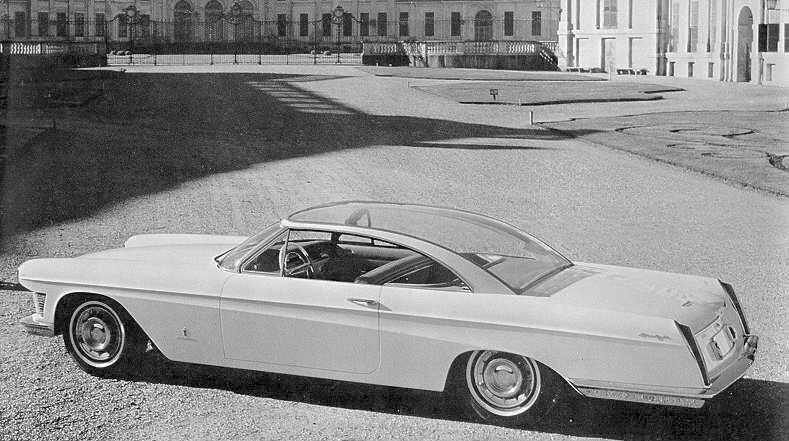
The collaboration between Cadillac and Italian design houses has produced some of the most luxurious and stylish automobiles in history. Renowned for their craftsmanship and elegance, these Italian Cadillacs highlight the artistry of iconic coachbuilders like Pininfarina, Ghia, Vignale, and Zagato. This article explores notable models built or designed by these prestigious firms, highlighting their unique contributions to the Cadillac legacy.
Cadillac V16 Torpedo (1931) - Pininfarina
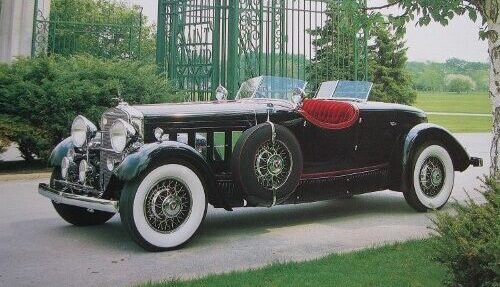
The Cadillac V16 Boattail Roadster marked a pivotal moment for Pininfarina, being their first project on a non-Italian chassis. This collaboration beautifully blended American power with Italian elegance, inspired by contemporary sports roadster trends. Though classified as a two-seater, its generous dimensions allowed for two additional “dickey seats” hidden within its tapering tail, adding practicality to its extravagant design. The car featured separate mudguards and an early example of embryo flanging, enhancing its streamlined silhouette by eliminating traditional running boards. Noteworthy elements included a two-segment, blade-type windscreen and five ventilation ports on each side of the bonnet. This partnership not only showcased Pininfarina’s design talent but also laid the groundwork for future collaborations between European styling and American automotive innovation, leaving a lasting legacy in automotive history.
Cadillac Series 62 Coupe (1953) - Ghia
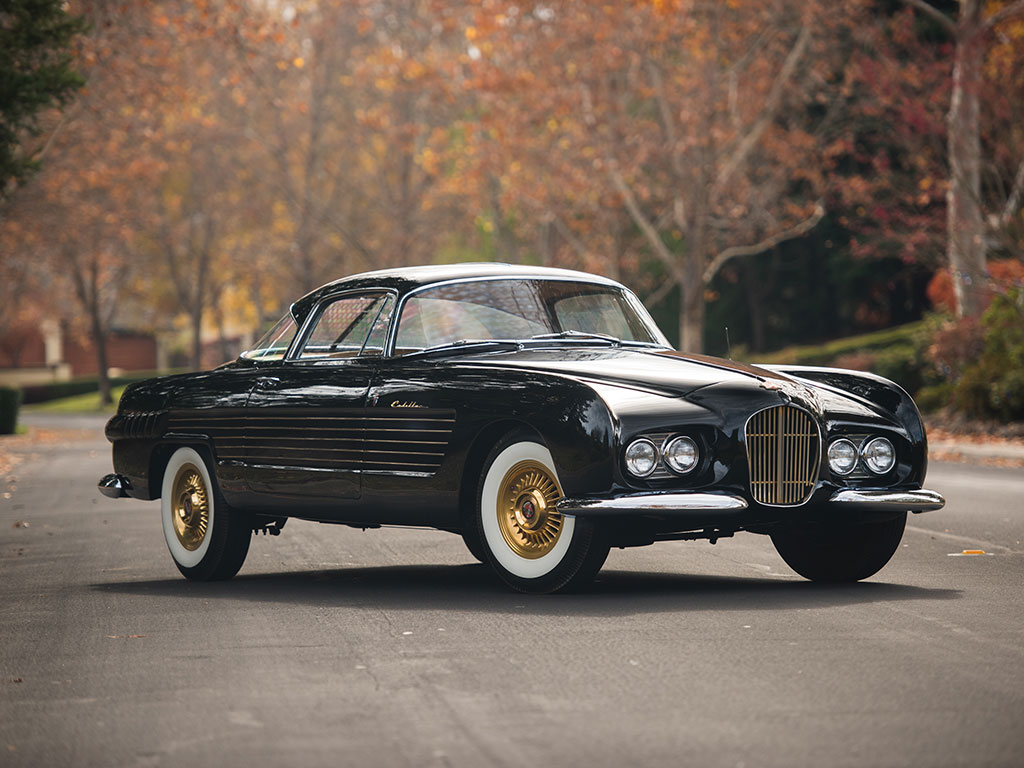
The Cadillac Series 62 Ghia is a stunning vehicle, one of only two Cadillacs crafted by Italian coachbuilder Ghia in 1953. Debuting at the 1953 Paris Auto Salon, it showcased the elegance of Italian design on an American chassis, merging artistry with engineering. Ghia was gaining fame for its innovative one-off “Idea” cars, and the Series 62 Ghia exemplified this creativity with its striking lines. After its exhibition, the car was purchased by Saudi Prince Aly Khan and gifted to actress Rita Hayworth, adding glamour to its story. Built on a Cadillac 62 chassis, this coupe was more than just a show car; it was a symbol of mid-century luxury. Its appearance on the cover of Road & Track magazine in January 1955 further cemented its place in automotive history, making the Cadillac Series 62 Ghia a cherished example of design excellence.
Cadillac PF 200 Cabriolet (1954) - Pininfarina
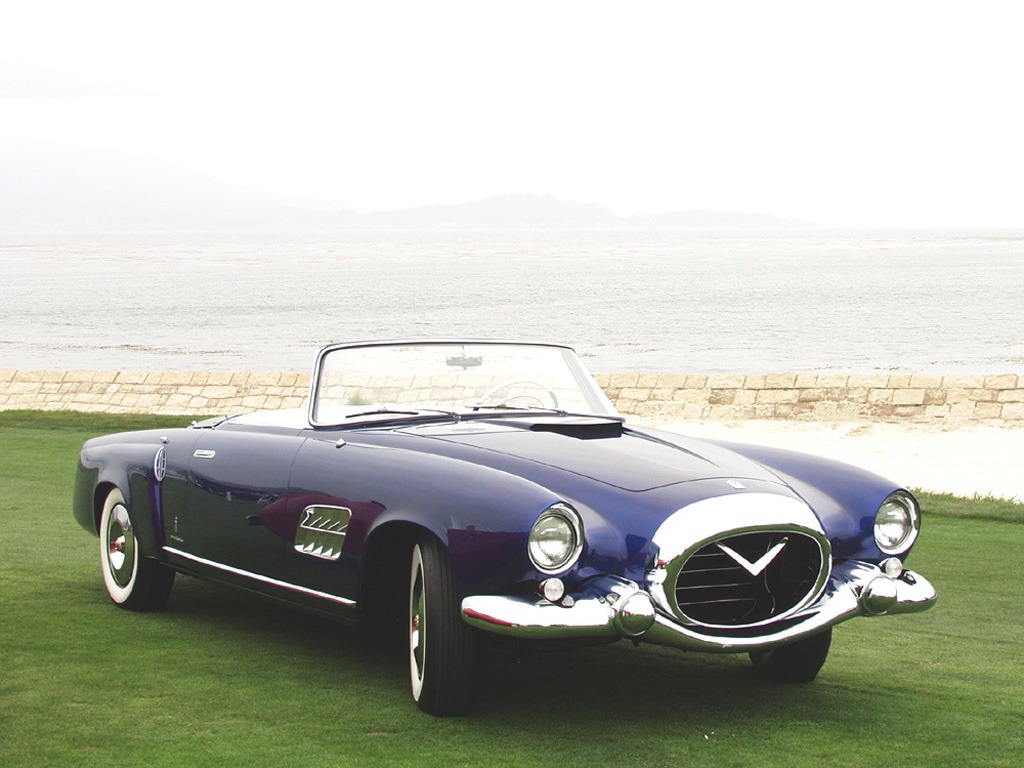
The Cadillac PF200 Cabriolet, unveiled in 1954, exemplifies the fusion of American ambition and Italian elegance, crafted by Pininfarina. With its flat convertible design and prominent oval grille featuring a chrome V inset, it captures the essence of 1950s styling, enhanced by rocket-shaped bumper horns. Originally finished in silver-gray with a beige interior, the PF200 Cabriolet never went into production but gained recognition, winning the Gran Premio d’Onore at the 1957 Concorso d’Eleganza Roma. Its design influenced future Pininfarina models, such as the Lancia Aurelia PF200 series. Today, the Cadillac PF200 Cabriolet is celebrated for its innovative design and luxury, making it a cherished piece of automotive history.
Cadillac Coupe Bill Frick (1955) - Vignale
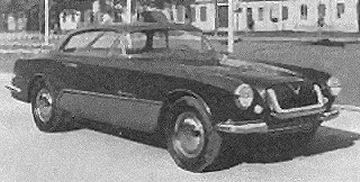
The Cadillac Coupé Bill Frick, designed by Giovanni Michelotti and crafted by Vignale in 1955, is a unique one-off vehicle showcasing a remarkable collaboration between American and Italian automotive talents. Commissioned by renowned engineer and customizer Bill Frick, this car merges European styling with American power. Michelotti’s sleek design features flowing lines, a bold front grille, and pronounced fenders, embodying mid-century European aesthetics on a powerful Cadillac chassis. This fusion highlights Frick’s vision of cross-continental excellence, combining high-performance engineering with sophisticated style. Notably, Vignale adapted Michelotti’s design for other vehicles, such as the Fiat 8V and MG TD, but the Cadillac version stands out as a true gem. As a one-off creation, the Cadillac Coupé Bill Frick is highly prized among collectors, symbolizing a pivotal moment in automotive history when American and European philosophies converged into a stunning and powerful vehicle.
Cadillac Elegante Special (1955) - Motto
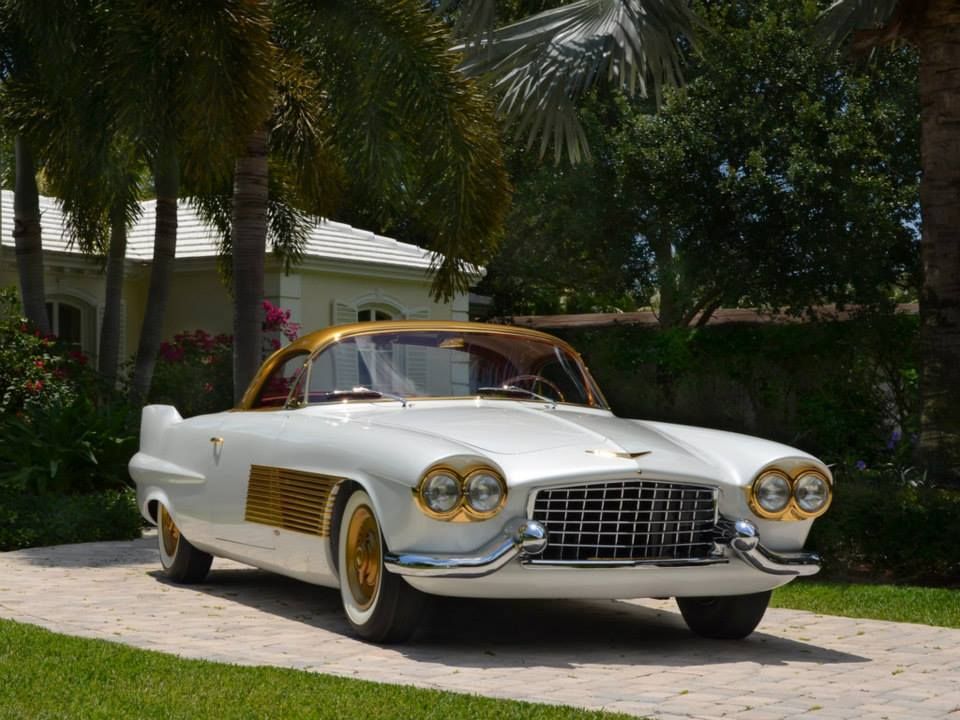
The Cadillac Elegante Special, crafted by Carrozzeria Motto in 1955, epitomizes a remarkable transatlantic collaboration that fuses American power with Italian design finesse. Conceived by designer Albrecht Goertz and commissioned by Birdsall & Mascari, an American luxury car dealership, this one-of-a-kind vehicle showcases the artistry of mid-century automotive design. Built on a 1953 Cadillac Series 62 convertible chassis, the car was shipped to Motto’s workshop in Turin, where artisans spent 30 months hand-fabricating an elegant aluminum body. The chassis was lowered by eight inches for a sleeker profile and enhanced performance. Notably, the car features an Italian-inspired egg crate grille, crafted by Motto, and twin front bumpers made from 1954 Cadillac bumper bullets. Attention to detail shines through with a hand-built two-piece aluminum hardtop, bronze-plated door handles, and custom front and rear “V” trim. Finished in a stunning iridescent white mother-of-pearl paint, with gold anodized accents, the Cadillac Elegante Special remains a rare example of bespoke automotive craftsmanship, beautifully merging American engineering with Italian elegance.
Bill Frick Special GT Coupe (1957) - Vignale
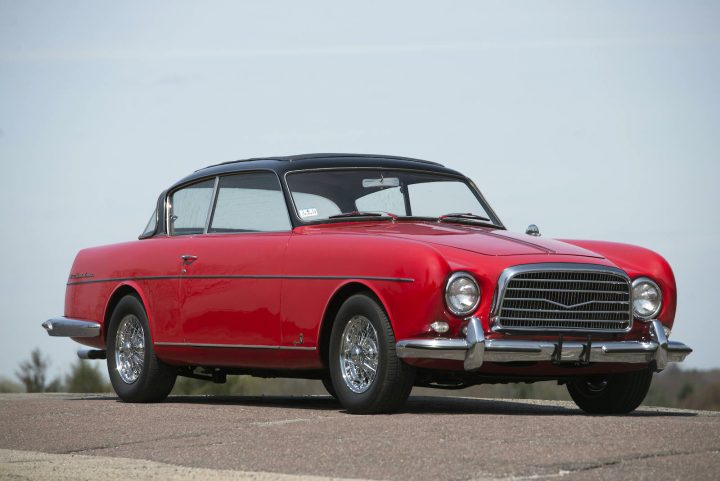
The Bill Frick Special GT Coupé, designed by Michelotti and bodied by Vignale, represents a bold evolution of Bill Frick’s earlier Studillac. Frick, unimpressed with the original 120hp engine of the 1953 Studebaker, replaced it with Cadillac’s 210hp engine, creating the high-performance Studillac. Capable of reaching mid-100 mph speeds and accelerating from 0-60 in 7 seconds, the Studillac was a sensation, even appearing in Ian Fleming’s James Bond novel, Diamonds Are Forever. However, when Studebaker’s 1955 redesign fell out of favor, Frick turned to Vignale. He enhanced the Studillac chassis with stiffer suspension, added crossmembers, and shipped it to Italy for a custom body. The result was the Bill Frick Special, a sleek, powerful GT that earned praise in Road & Track and made the cover of Sports Car Illustrated in 1956. Dubbed “America’s answer to Europe,” it combined European elegance with American power, cementing its place in automotive history.
Cadillac Skylight Coupe (1957) - Pininfarina
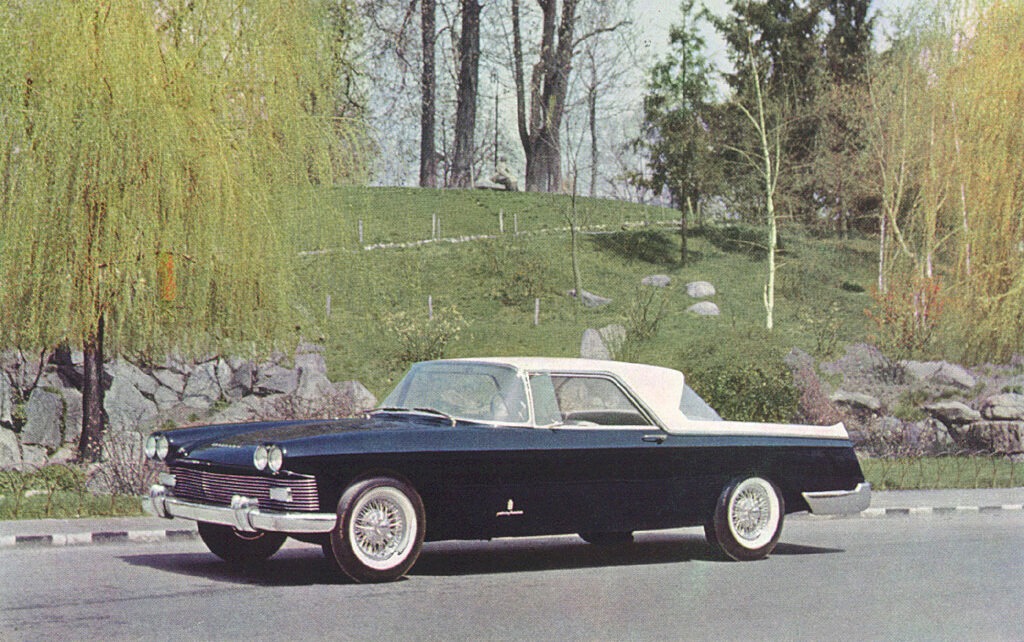
The Cadillac Skylight Coupé, introduced in 1958, signifies a pivotal shift in Cadillac’s design, emphasizing smoother and more sophisticated styling. Crafted by Pininfarina, it elegantly blends American luxury with Italian flair. A notable feature is its broad radiator grille with thin horizontal chrome bars, complemented by twin headlights that enhance the streamlined appearance. The coupé’s forward-tilted design and high tail fins create a dynamic silhouette, while spoked wheels with classic whitewall tires add sophistication.
Cadillac Skylight Convertible (1957) - Pininfarina
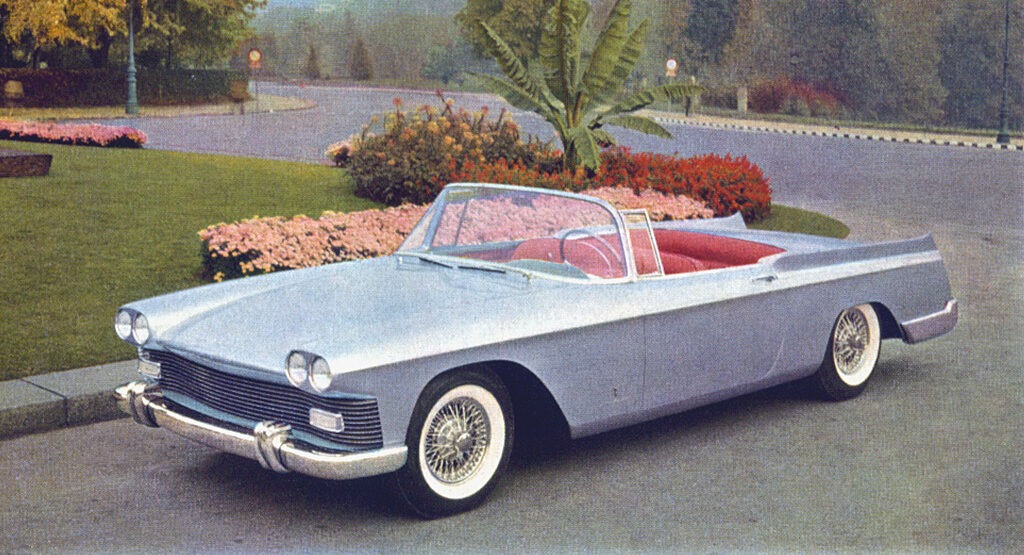
The Cadillac Skylight Convertible, part of the Skylight series, exemplifies the fusion of American automotive innovation and Italian design sophistication. Introduced as a one-off model at the 1958 Geneva and Paris Auto Shows, it showcased the elegance of Pininfarina, the renowned Italian design house behind its striking styling. This unique vehicle features a striking silver-blue exterior, reflecting mid-century design trends with its sophisticated color. The interior is adorned in rich red leather, creating a dramatic contrast that enhances the car’s luxurious appeal.
Cadillac Starlight (1959) - Pininfarina
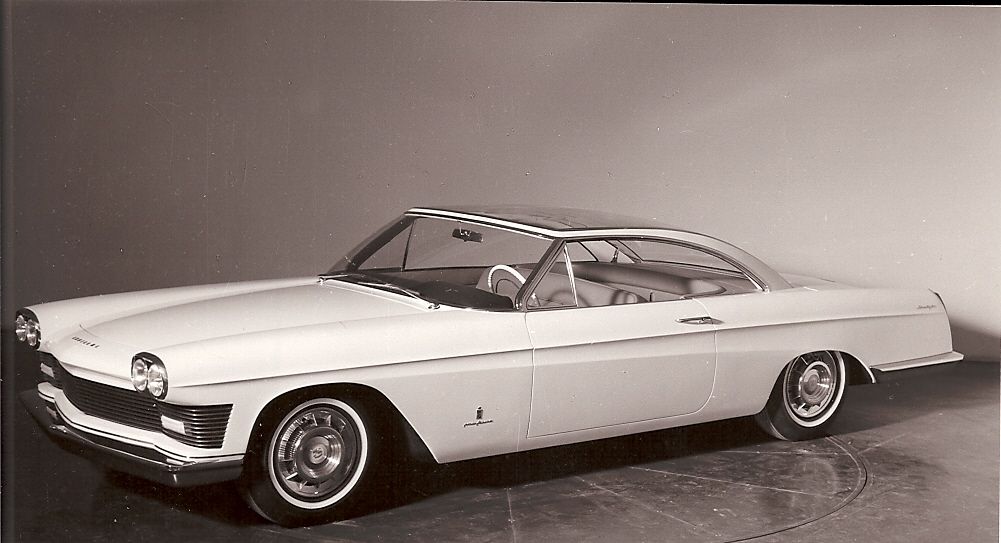
The Cadillac Starlight exemplifies a remarkable collaboration between Pininfarina and the Cadillac brand, emerging from the Eldorado Brougham project. Unveiled at the 1959 Paris Salon and later showcased in Turin, the Starlight captivated automotive enthusiasts with its striking design and innovative features. One of its standout elements is the Plexiglas top, featuring a unique headliner made of four articulated metal panels that could be stored behind the parcel shelf when not in use. This clever design added practicality to its avant-garde aesthetic. With its sleek lines and distinctive silhouette, the Cadillac Starlight represented the height of automotive elegance and sophistication, merging Italian craftsmanship with American engineering. Although limited in production, its enduring influence on luxury automobile design ensures its status as a classic among collectors and enthusiasts.
Cadillac Eldorado Brougham by Pininfarina (1959)

The Cadillac Eldorado Brougham, produced in collaboration with Pininfarina from 1959 to 1960, is one of the rarest Cadillacs of its era. Handcrafted in Italy, this model featured American mechanics with a more subdued exterior style compared to its flamboyant predecessors. Its sleek design included discreetly integrated taillights within the fins, offering a refined alternative to earlier, more elaborate Cadillac designs. Only 99 units were made, making surviving examples incredibly rare. Though the 1957-1958 Eldorado Broughams set a high bar for luxury and quality, the later Italian-made versions are less revered by collectors, partly due to a decline in craftsmanship. Despite this, the 1959-1960 Eldorado Brougham remains a symbol of Cadillac’s cross-continental design partnership and unique styling vision during this period.
Cadillac PF Jacqueline (1961) - Pininfarina
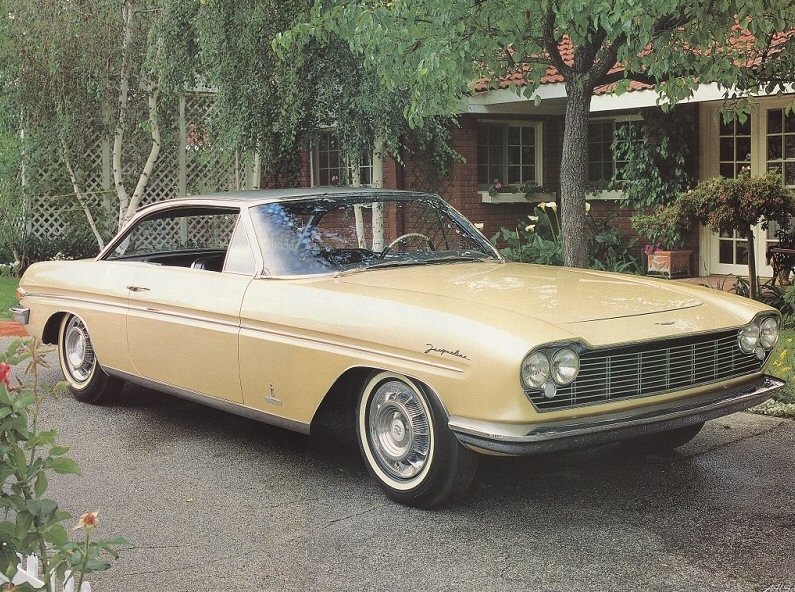
The Cadillac PF Jacqueline is a stunning one-off show car, designed by Pininfarina and unveiled at the 1961 Paris Salon. Named after Jacqueline Kennedy, the car reflected Pininfarina’s desire to collaborate with Cadillac, the leading luxury car brand at the time. Part of a limited series of Cadillac-based designs, including the ‘Skylight’ and ‘Starlight’ models, only the Jacqueline and Skylight coupés have survived. Though incomplete at its debut, with no engine or suspension, the Jacqueline captivated audiences with its groundbreaking design, influencing future General Motors models. After spending decades in Pininfarina’s museum, it was sold to Alain Dominique Perrin, President of Cartier, who restored it to a driveable state by mounting it on a 1960 Cadillac Eldorado Biarritz chassis. The restoration added a 390 cu in V8 engine and preserved many of its original interior elements.
Cadillac N.A.R.T. Zagato (1970) - Zagato
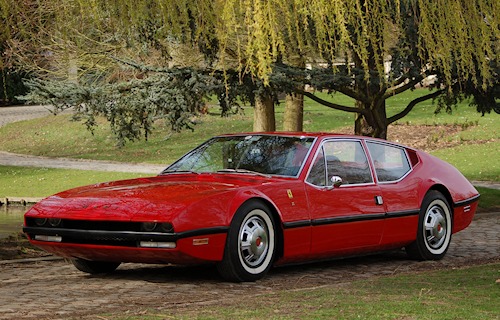
The Cadillac NART Zagato, a 1970 concept car, was a bold collaboration between Luigi Chinetti Jr., the North American Racing Team (NART), and Italian coachbuilder Zagato. Conceived to offer a luxurious, high-performance four-seater, the car aimed to deliver a distinctive, mid-engine design while maintaining Cadillac’s elegance and power. Chinetti relocated the Cadillac Eldorado’s front-wheel-drive powertrain behind the rear seats to create a mid-engine layout, ensuring a sleek and innovative approach. The concept was developed with General Motors’ initial support and was refined by an Art Center graduate, leading to a full-size clay model. Zagato was entrusted to bring the design to life, using a Cadillac Eldorado as the foundation.
Cadillac Allantè (1987) - Pininfarina
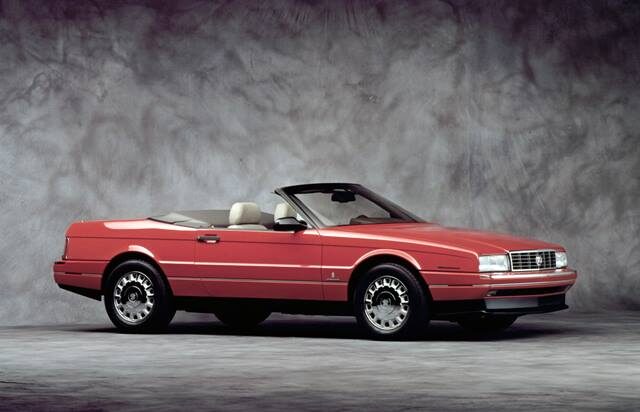
The Cadillac Allanté, produced from 1987 to 1993, was Cadillac’s attempt to compete with luxury rivals like the Mercedes-Benz SL and Jaguar XJS. Over its seven-year run, more than 21,000 units were made. Powered by a 4.1L V8 at launch, the engine was upgraded to a 4.5L V8 in 1989 and the 4.6L Northstar V8 in its final 1993 model year. The Allanté featured a unique production process, with Pininfarina in Italy designing and building the bodies, which were then flown 4,600 miles to Detroit for final assembly in a process dubbed the “Allanté Air Bridge”. The model also stood out with its fully electronic instrument panel, though it lacked the touchscreen control panel seen in other GM vehicles of the era like the Buick Reatta.
Cadillac Villa (1971) - Bertone
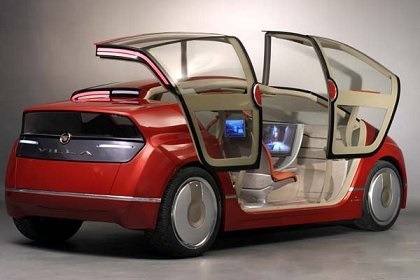
The Cadillac Villa, revealed by Italian coachbuilder Bertone at the 2005 Geneva Motor Show, was a striking concept car built on the Cadillac SRX platform. Its standout feature was its bold use of plexiglass doors and roof, with the front doors and roof opening upwards toward the front, and the rear doors opening upwards toward the back. This unique design created a dramatic, futuristic entry experience. Inside, the Villa boasted a luxurious, minimalist interior, embracing modern architecture’s clean lines and innovative use of space. The design highlighted advanced technologies, including LCD displays replacing traditional dashboards and the absence of rearview mirrors, focusing on virtual connectivity and sleek functionality.
These Italian Cadillacs represent a unique intersection of American luxury and Italian design, illustrating the enduring appeal of collaboration in the automotive world. Each model tells a story of innovation, artistry, and the relentless pursuit of excellence.


